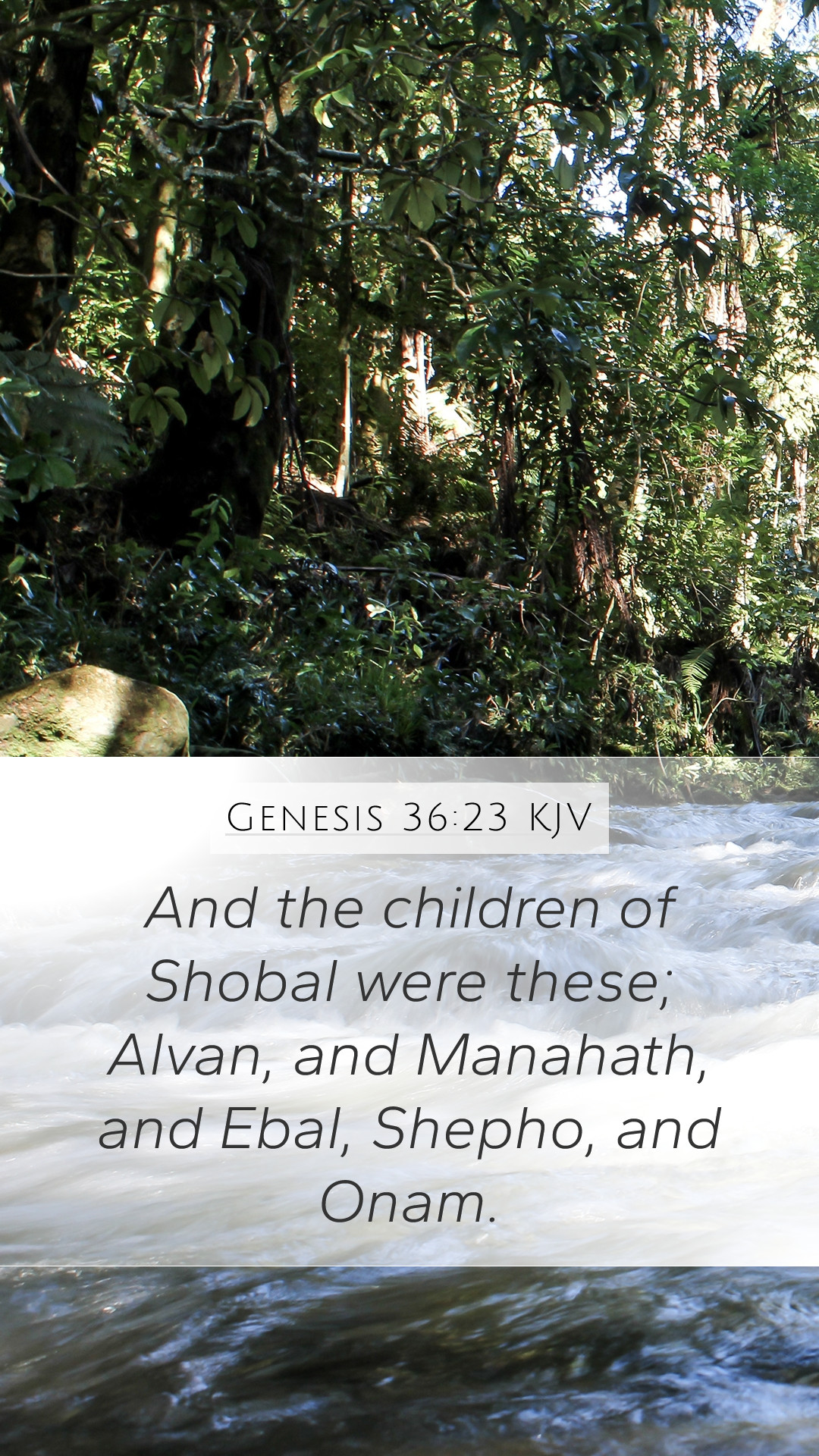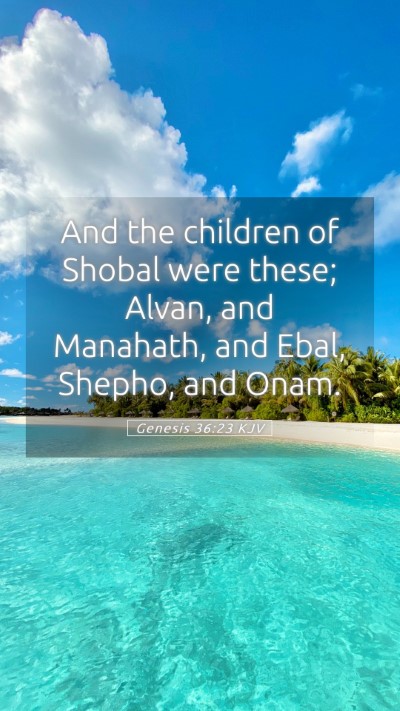Understanding Genesis 36:23
Genesis 36:23 states: "And the children of Dishan were Hamram, and Eshban, and Ithran, and Cheran." This verse is part of the genealogical record of Esau's descendants, illustrating the lineage and family connections that play a significant role in the narrative of the Old Testament.
Meaning of Genesis 36:23
The verse emphasizes the importance of lineage and inheritance in biblical times, reflecting how family ties were central to the identities of the tribes and nations of Israel. The names mentioned—Hamram, Eshban, Ithran, and Cheran—represent the descendants of Dishan, who is one of the sons of Seir, the Horite.
Bible Verse Commentary
- Matthew Henry's Commentary: Matthew Henry highlights that genealogies in the Bible serve both historical and theological purposes. They trace the fulfillment of God's promises and show the continuity of His plan through specific families. In this context, Henry reflects on how the descendants of Esau, which includes Dishan's children, form a significant people in relation to Israel.
- Albert Barnes' Notes: Barnes points out that these genealogical details, while seeming mundane, illustrate God's ordination of nations and individuals for His divine purposes. The mention of these names implies the establishment of tribes that may become significant in future narratives. The focus on their relationships underscores God's sovereignty in human affairs.
- Adam Clarke's Commentary: Clarke elaborates that the names mentioned can be subjects of further study, noting that names in the Bible often carry meanings that provide insights into the character of individuals or their roles. He encourages readers to look deeper into the significance of these names and consider how they might relate to God's broader plan for His people.
Scripture Analysis
To fully grasp the significance of Genesis 36:23, one must consider its historical and cultural context. The descendants of Esau, referred to here, later develop into the nation of Edom. This connection has implications throughout the biblical narrative, particularly in the relationship between Israel and Edom.
Historical Context
The references to families and tribes reflect the social structure of ancient Israelite society, where lineage determined inheritance, identity, and rights. In addition, these genealogies contribute to understanding the dynamics between Israel and neighboring nations, such as Edom, which is descended from Esau.
Application of Genesis 36:23
Understanding this verse enables readers to appreciate the complexity of biblical history and God's unfolding plan through generations. It emphasizes the importance of family and community, encouraging individuals to reflect on their own heritage and how it shapes their identity in faith.
Cross References
- Genesis 25:30-34 - The story of Esau selling his birthright.
- Genesis 36:1-2 - The account of Esau's family.
- Deuteronomy 2:1-8 - Israel's journey through Edom.
- Obadiah 1:10-14 - A prophetic message concerning Edom's future.
- Romans 9:13 - Reference to Jacob and Esau, emphasizing God's purpose.
Bible Study Insights
For Bible study groups, Genesis 36:23 serves as an excellent example for exploring genealogical records in scripture. It allows for discussions on the significance of names, heritage, and how they relate to God's overarching theme of redemption. Engaging with this verse can lead to deeper conversations about personal identity and community in the context of faith.
Conclusion
In summary, Genesis 36:23 may appear to be just a list of names, but it provides profound insights into biblical history, God's covenant, and the continuity of His people. Understanding Scripture through passages like this invites believers to appreciate the intricate tapestry of God's work across generations.


